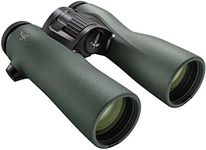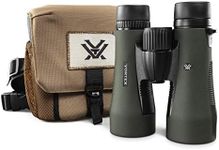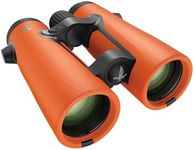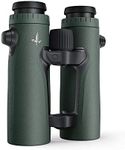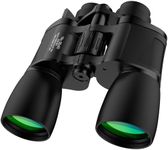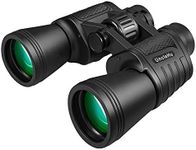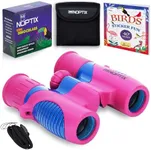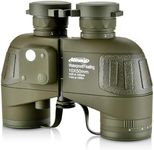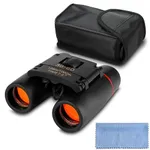Buying Guide for the Best Astronomy Binoculars
Choosing the right astronomy binoculars can greatly enhance your stargazing experience. Unlike telescopes, binoculars are more portable, easier to use, and provide a wider field of view, making them ideal for beginners and casual observers. When selecting binoculars for astronomy, it's important to consider several key specifications to ensure you get the best fit for your needs. Understanding these specs will help you make an informed decision and enjoy the night sky to its fullest.MagnificationMagnification indicates how much closer an object will appear compared to the naked eye. For astronomy binoculars, a magnification of 7x to 10x is generally recommended. Higher magnification can provide more detail but may also make the image shakier and harder to stabilize without a tripod. If you're a beginner or plan to hand-hold your binoculars, stick to the lower end of this range. If you have a steady hand or plan to use a tripod, you might opt for higher magnification.
Objective Lens DiameterThe objective lens diameter, measured in millimeters, determines how much light the binoculars can gather. This is crucial for astronomy, as more light means better visibility of faint celestial objects. Common sizes range from 35mm to 70mm. For casual stargazing, 50mm is a good balance between light-gathering ability and portability. Larger diameters like 70mm can provide brighter images but are heavier and bulkier.
Field of ViewField of view (FOV) is the width of the area you can see through the binoculars, usually measured in feet at 1,000 yards or degrees. A wider FOV is beneficial for astronomy because it allows you to see more of the sky at once, making it easier to locate and track objects. Look for binoculars with a FOV of at least 5 degrees or 260 feet at 1,000 yards. If you enjoy scanning the sky and observing larger star clusters, prioritize a wider FOV.
Exit PupilThe exit pupil is the diameter of the beam of light that exits the eyepiece, calculated by dividing the objective lens diameter by the magnification. For astronomy, an exit pupil of 5mm to 7mm is ideal, as it matches the dilation of the human eye in low light conditions. This ensures maximum light reaches your eyes, providing a brighter image. If you plan to use your binoculars in very dark environments, aim for a larger exit pupil.
Prism TypeBinoculars use prisms to correct the orientation of the image. The two main types are Porro prisms and roof prisms. Porro prisms are generally preferred for astronomy because they offer better depth perception and a wider field of view. They are also usually more affordable. Roof prisms are more compact and durable but can be more expensive. If portability and ruggedness are important to you, consider roof prisms; otherwise, Porro prisms are a solid choice.
CoatingsLens coatings improve light transmission and reduce glare, which is essential for clear and bright images. Fully multi-coated lenses are the best option, as they have multiple layers of coatings on all air-to-glass surfaces. This maximizes light transmission and enhances image quality. If you're serious about astronomy, look for binoculars with fully multi-coated lenses. For casual use, single-coated or multi-coated lenses can still provide good performance.
Weight and ErgonomicsThe weight and ergonomics of binoculars affect how comfortable they are to use, especially for extended periods. Heavier binoculars can be tiring to hold, so consider how you plan to use them. If you intend to hand-hold your binoculars, look for a lighter model with a comfortable grip. If you plan to use a tripod, weight is less of an issue. Ergonomic features like adjustable eyecups and a smooth focus wheel can also enhance your viewing experience.
